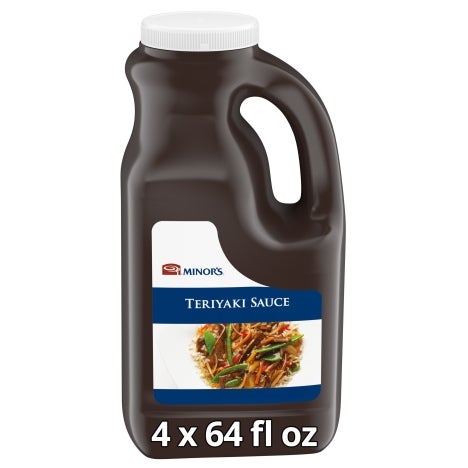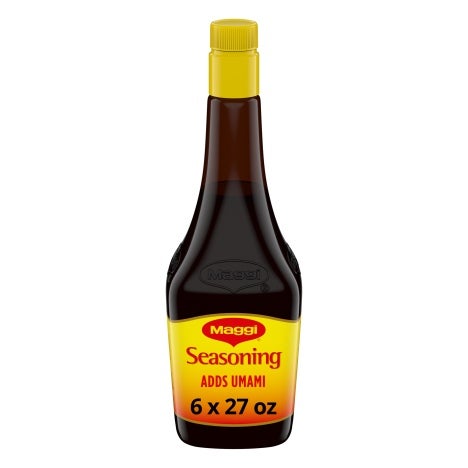
Layer Your Flavors With These Steps
Seasonings add flavor at every step; from prep to table, you can add deep, satisfying layers of flavor. Use these tips to amp up flavors for sales.
Today’s best menu specialties are all about flavor, and there are many ways to accomplish that. Flavor can be introduced at multiple points during the preparation process, from pre-cook marinades to the last little garnish at the pass or on the table. Even better, layer different flavor-building techniques in complementary or surprising ways.
Marinades and Brines – Liquid baths for proteins and produce not only introduce flavor before the cooking process, they can also keep foods moist and serve to tenderize tougher cuts of meat and even sturdy vegetables.
At its simplest, a basic marinade usually includes a liquid base, often including some acid (such as wine or orange juice), fat for richness and “cling,” and a seasoning, which can just be salt but also so much more. A good marinade, in fact, builds complexity and establishes a flavor theme for your food.
Brines can be thought of as a type of marinade; a basic brine consists of a liquid and salt, but can also be built up to include other flavorings such as herbs and spices, garlic, and so on. Brines are particularly useful for adding flavor and moisture to neutral-flavored proteins that can otherwise be dry, such as pork and turkey.
The amount of time food can be kept in a marinade or brine depends on the food; the texture of seafood, for instance, can break down if it’s kept in a liquid for too long, but sturdy meats can be marinated or brined for hours or even a day or more.
Remember not to reuse a marinade as a basting sauce, due to food safety hazards. Reserve some of the marinade separately, instead.
Did You Know? Most Minor’s® products—including bases, flavor concentrates, and sauces—are Ready-to-Flavor™, meaning they can be used in hot and cold applications without the added step of cooking.
Rubs – Often referred to as a dry brine, a pre-cook rub adds flavor and boosts tenderness and moisture by redistributing natural juices. Rubs can be dry (such as a spice rub) or wet (for instance by creating a paste with the addition of puréed onions or fresh herbs). Rubs are almost always used with dry-heat cooking methods such as grilling and barbecuing. They can be left for a short time or longer, used to create a crust, or removed prior to cooking, depending on the food and on the rub’s intended purpose.
Try This: Use a Minor’s base as-is or as a starting point for a flavorful rub. Minor's chef George Sideras recommends putting Maggi® Seasoning or Minor's Au Jus Prep in a spray bottle and misting meats right as they come off the grill for mouth-watering aroma and tongue-tingling flavor.
Cooking Techniques – Although we tend to think of flavor boosters in terms of marinades and sauces, most cooking techniques also add flavor in and of themselves. Searing, grilling, and high-temperature roasting all add flavor through caramelization, while poaching, simmering, and braising boost the appeal of foods through the long, slow infusion of flavorful cooking liquids. Some methods add flavor twice, as when we brown meats in hot fat on the stove, then add stock to braise.
With moist-heat cooking methods such as braising and poaching, the opportunity to add flavor with cooking liquids is limited only by the cook’s imagination and the products available in the pantry.
Get Started: This recipe for Burgundy Beef Tips with Mushrooms demonstrates a two-step sear-and-simmer technique for building flavor.
Bastes – Basting food while it roasts, grills, or cooks in a pan is a great seasoning step, and can also help to keep things moist. The baste itself can be simple pan juice or drippings, such as from a roasting chicken, or it can be another liquid or flavorful fat, such as reserved (unused) marinade. You can also boil leftover used marinade for at least a minute to kill any bacteria it’s picked up when in contact with the raw food.
Thick steaks and chops, chicken breasts, and sturdy fish can be finished in a pan by basting them with butter or the fat from the initial searing as they continue to cook, which has the added advantage of creating a pan sauce. This sauce can be further flavored by deglazing with wine or stock, and/or with the addition of mustard, shallots, or another ingredient.
Tip: Read this article in Bon Appétit on quick pan sauces for more information.
Sauces – Perhaps nothing denotes a flavor-driven kitchen more than the use of sauces; under Escoffier, the French codified a whole science of sauce-making. And while many sauces have the reputation of being both challenging to produce and heavy on the palate, today’s speed-scratch products and interest in lighter prep techniques make for some interesting possibilities.
-
Vinaigrettes – Beyond being a dressing for salads, this versatile cold sauce adds brightness and flavor to cooked foods of all kinds. Texture can also be added in the form of ingredients like shaved fennel or celery, mustard seeds, lemon zest, and more
-
Broths – Serving food in a flavorful broth represents a light and sophisticated way of adding savor as well as moisture; this technique is also extremely versatile for adding a global element to menu items (see this recipe for Thai Chicken Broth)
-
Salsas and Relishes – Grilled and roasted foods, in particular, benefit from the finish of a fresh fruit or vegetable sauce, relish, or chutney, which adds not only flavor but also texture and colorful visual interest
-
Flavored Butters – Here’s an easy flavor step: Mix softened butter with herbs, nuts, roasted garlic, a Minor’s flavor concentrate, citrus juice, and zest . . . just about anything, really. Then rechill and have at the ready to top meats fresh off the grill or hot cooked vegetables; by the time the food reaches the customer, the butter will have melted into a delicious sauce
Get Started: Nestlé Professional offers many sauce products that can be used as-is or enhanced to create signature preparations. These include Minor’s classic mother sauces (Demi Glace and Hollandaise) and other sauces; Stouffer’s® Alfredo Sauce and Alfredo Parmigiana Sauce (featured in the 2016 Buyer's Guide from FSR magazine); Trio® sauce and gravy mixes; and Chef-mate® cheese sauces, Hot Dog Chili Sauce and Country Sausage Gravy.
At the Table – In a word, condiments. From a simple wedge of lemon to ketchup and mustard to Sriracha—to say nothing of house-made flavor boosters of all sorts—condiments represent a great strategy for allowing guests to customize their own flavor experience at the table. Seek out interesting ready-to-use bottled and jarred condiments, or follow the lead of creative chefs who are making their own versions of such staples as steak sauce, barbecue sauce, and Maggi Seasoning. Or consider tabletop pots of housemade:
-
Salsa verde or chimichurri
-
Seasoned dipping oil, vinegar or ponzu
-
Chile sauce
-
Spiced salt or pepper blend
-
Pico de gallo
-
Sweet or savory jam
Did You Know? You can also make condiments using this handy Plus-One Ingredient Matrix.






